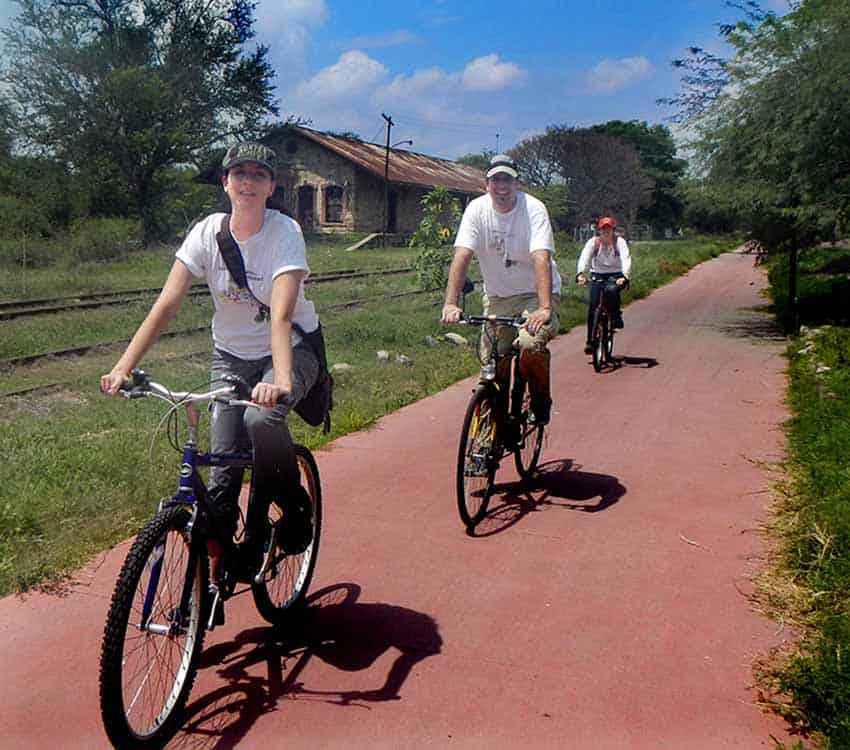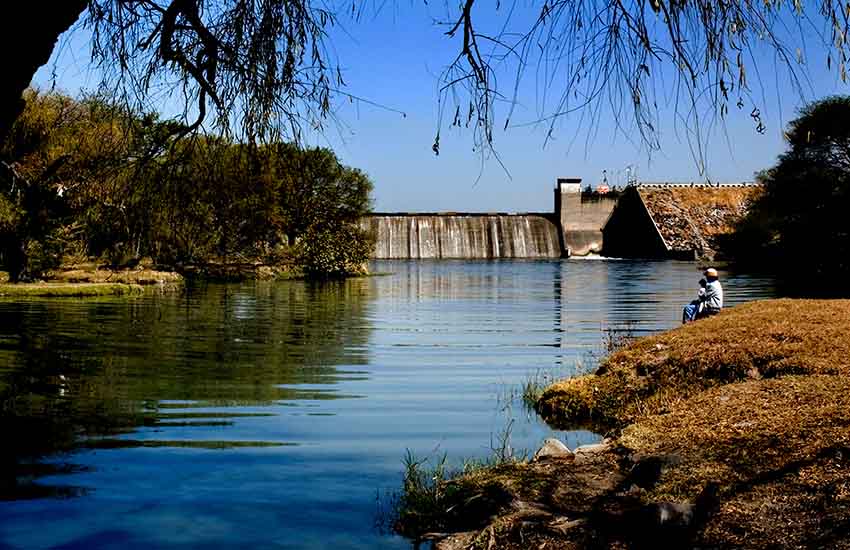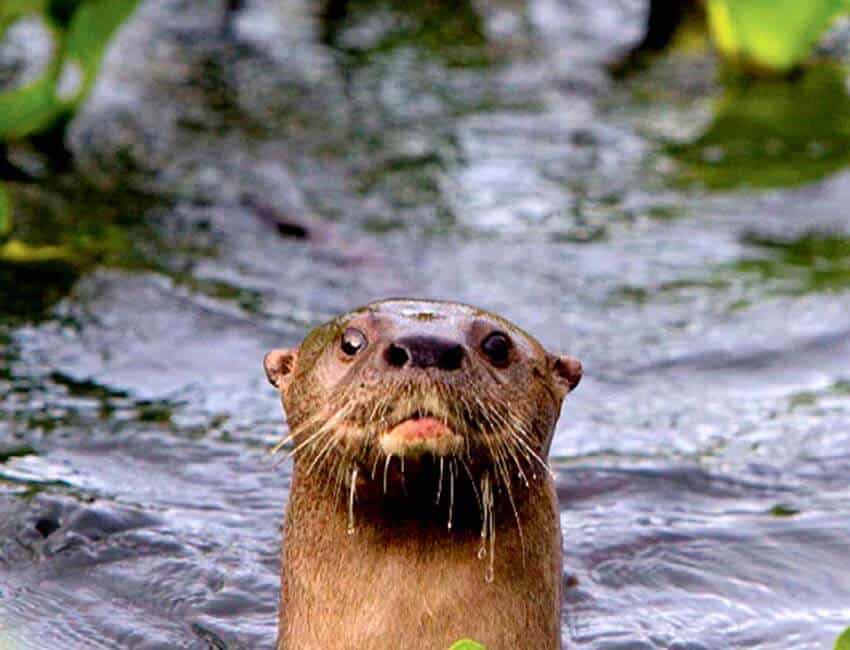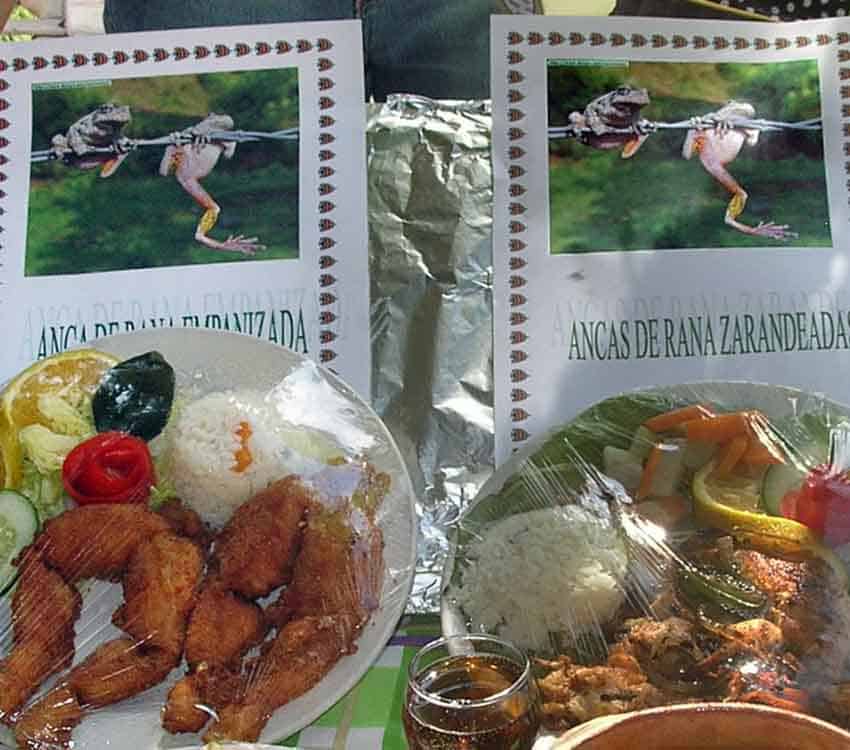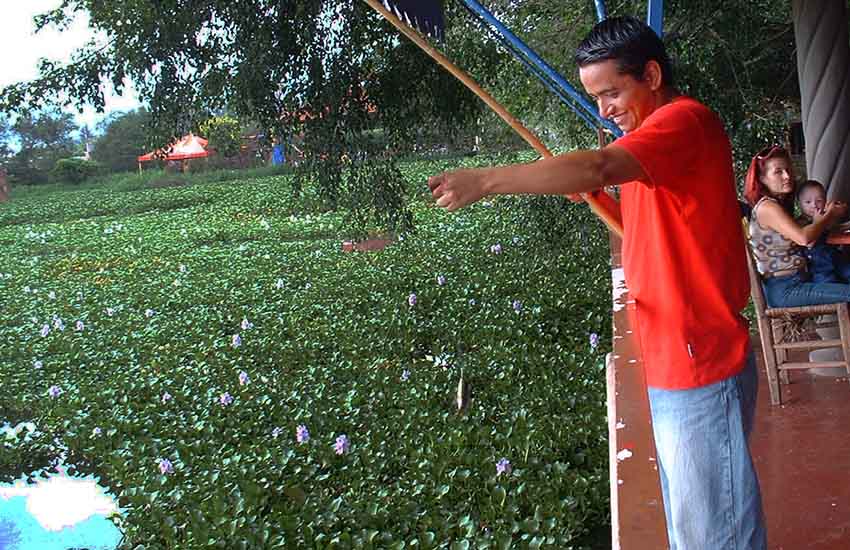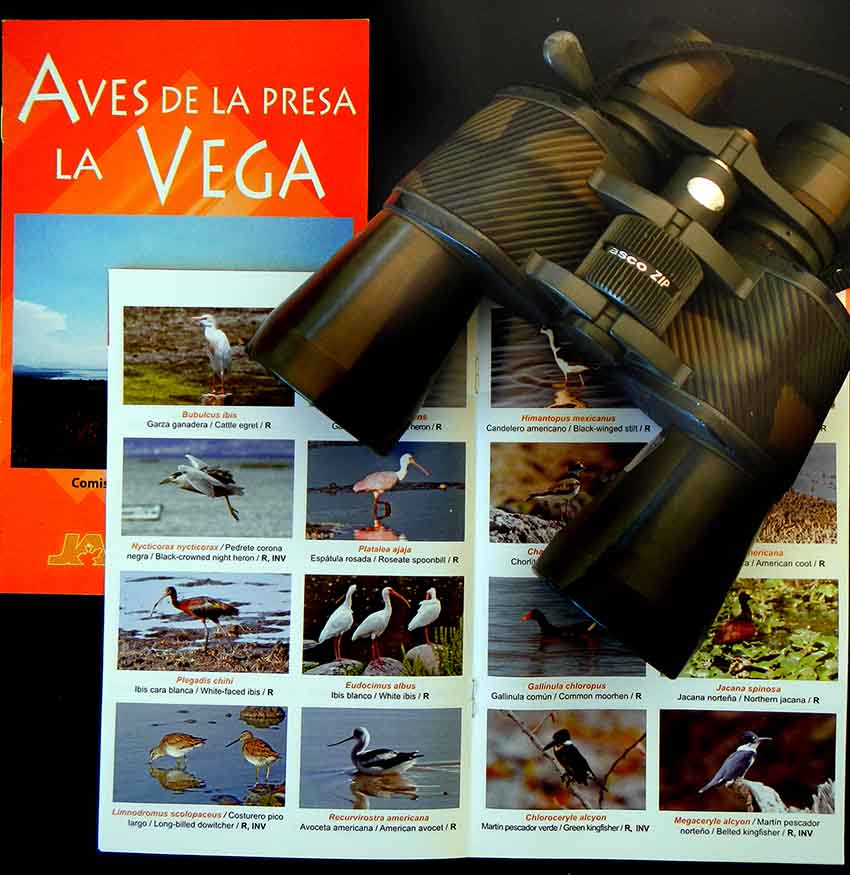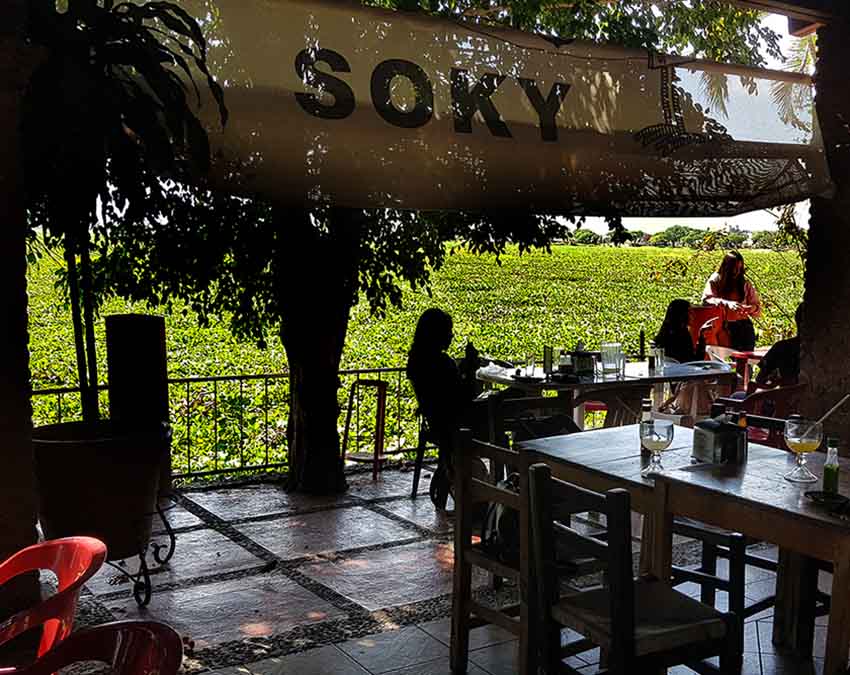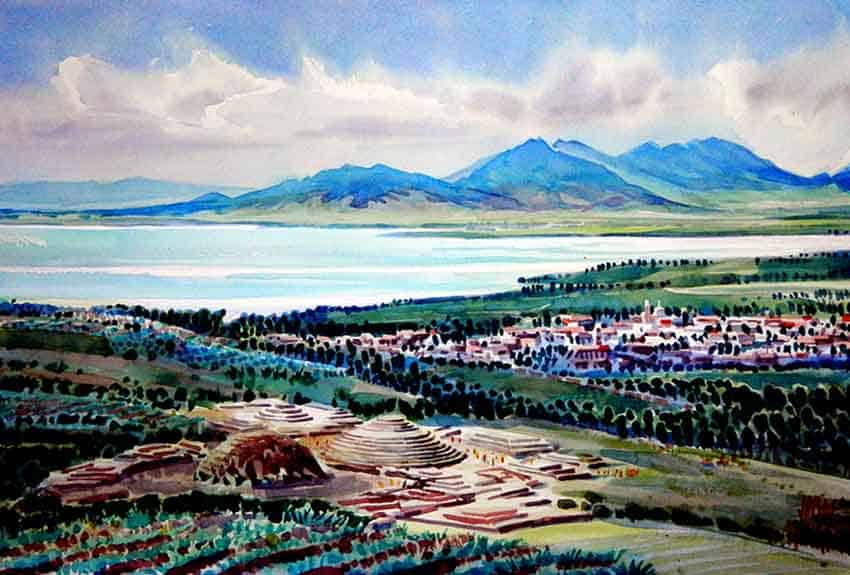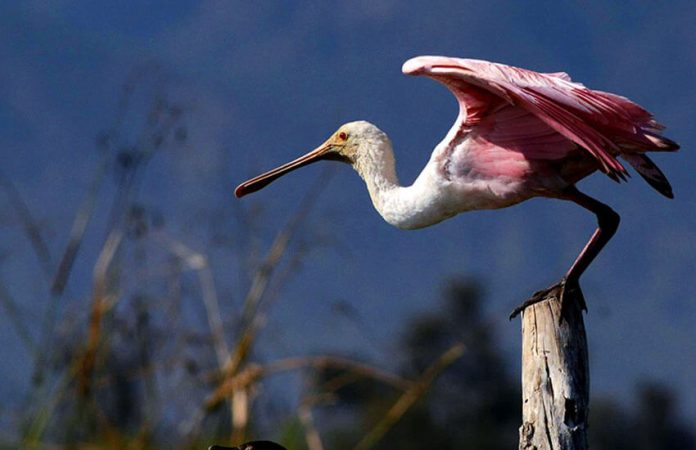Without a doubt, the most popular nonalcoholic tourist attraction outside the city of Guadalajara is the Guachimontones Archaeological Site. But once you’ve strolled among the circular pyramids and visited the Phil Wiegand Interactive Museum … what else is there to do?
If you are thinking of eating, swimming, walking, cycling or picnicking — not to mention birdwatching or kayaking — head for the lake!
No, I’m not thinking of Lake Chapala, but rather that little lake you probably already spotted when you climbed to the top of the biggest guachimontón: la Presa de la Vega.
The body of water is nine kilometers long and two wide and is the source of the 230-kilometer-long Ameca river, which serves as the border between Jalisco and Nayarit and whose waters spill into the Pacific Ocean at Puerto Vallarta.
At the northern end of La Vega, there are restaurants, and you’ll find most of them full of people on the weekend. Ceviche, fried fish and shrimp are all popular, but every restaurant around here also includes on its menu a specialty: frogs legs.
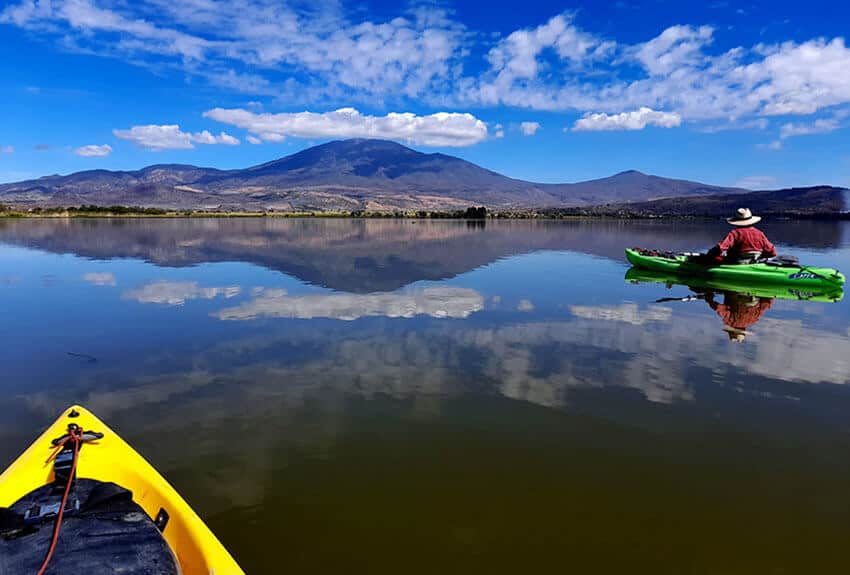
This is because the area’s predilection for frogs goes way back — perhaps even to pre-Hispanic times. In fact, the nearby town of Teuchitlán has been holding a yearly Frog Festival for as long as people can remember.
Sad to say, La Vega’s frogs were so popular that they eventually became extinct at the lake, and those you now find on the menu are all imported from the state of Nayarit!
Each of the restaurants offers a picturesque view of the lake as well as of the old aqueduct at its northern end. Most of them will provide kids — and adults too — with a cane pole so they can try their luck as fishermen while waiting for dinner to be served.
The first time I went looking for Presa la Vega, I couldn’t find it. I was of course looking for water, but in that year, 1985, the entire lake was hidden under a carpet of green.
The culprit was the water hyacinth (Eichhornia crassipes), popularly called el lirio, which has been fighting tenaciously to take over all the lakes of Jalisco (including Chapala, Mexico biggest lake) ever since an unnamed Frenchwoman — according to legend —brought the plant to Mexico to brighten up her garden pond.
It’s true that these flowers are charming, but unfortunately, the great green carpet of lirios uses up a lot of the lake’s oxygen, to the detriment of its fish stock.
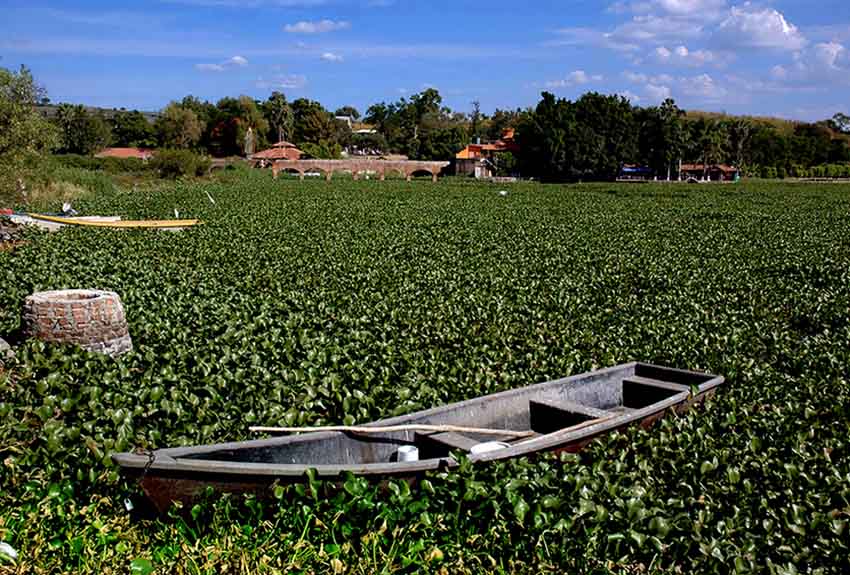
Over time, a myriad of solutions to El Problema Del Lirio have been tried. For some years, huge floating machines crisscrossed the lakes, chopping up the lirios for compost, but eventually, it was acknowledged that the water hyacinth could actually reproduce faster than the loaders could heap it onto trucks.
Then people came up with biodegradable herbicides that would wipe them out in nothing flat — but at what price? There was even a project to import manatees, which were supposed to happily dine on the lirios, keeping them under control, but no one was able to control the local fishermen and hunters who soon caught every one of the sea cows.
So, over the years, the water hyacinths come and go, nevertheless allowing enough fish to flourish to satisfy great numbers of water birds that frequent the lagoon.
There are so many birds at Lake la Vega (149 species, they say) that the Jalisco Water Commission has published a bird guide Aves de la Presa de la Vega, which you can download as a printable PDF file.
Many of these birds you can see simply by walking along an andador located just south of the restaurants. This is a two-kilometer-long walkway, a rather unusual one because it is bordered by water on both sides, allowing you to spot both marsh and lake birds.
Here you are likely to see white egrets, or jacanas (which walk on the lily pads), ibises, anhingas and cormorants, surely enough species to satisfy someone who is walking off a dinner of mariscos (seafood).
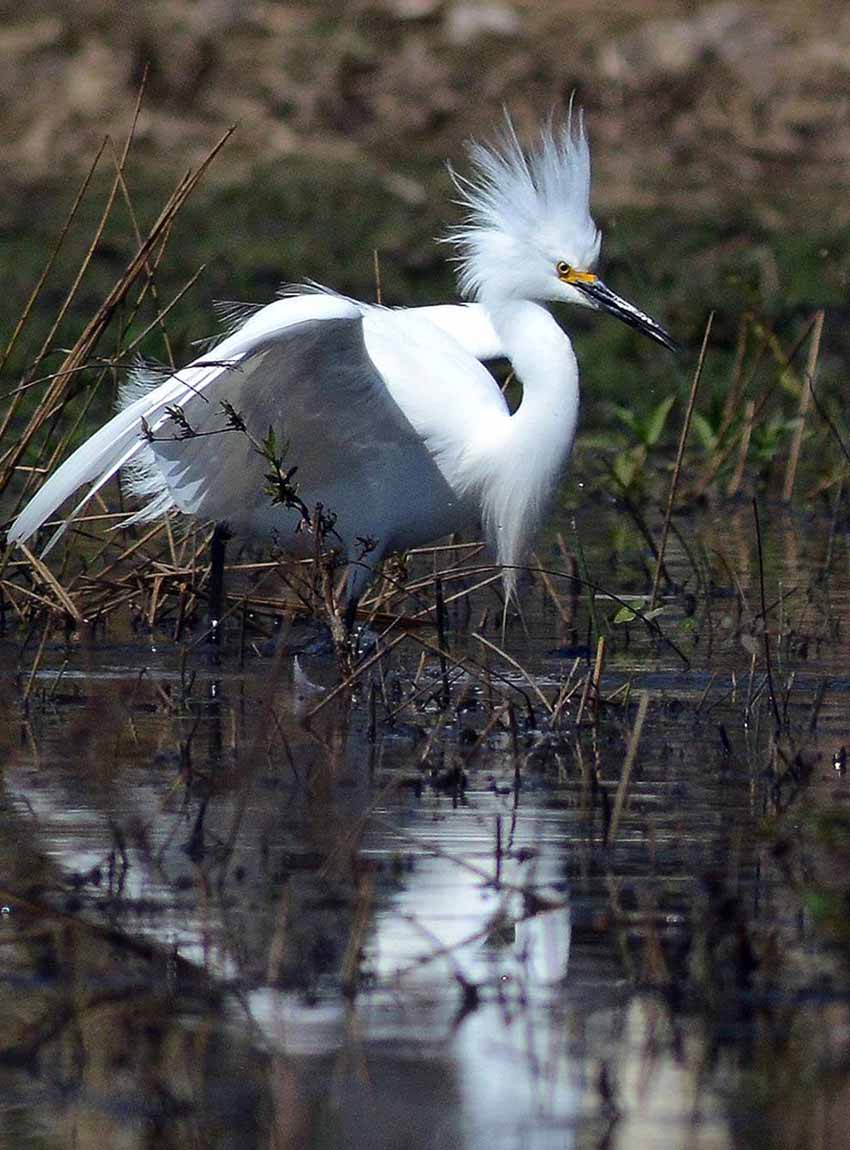
The true birdwatcher, however, will head down to the south end of the lake and launch a kayak from a little park near the dam.
Here, ornithologists can get close to roseate spoonbills, green herons, wood storks and black-bellied whistling ducks. With a little luck, they might even find themselves paddling alongside one of the otters that make their home in this lake.
At the end of this same little park, you also have easy access to a section of Las Vias Verdes. This project has converted many of Jalisco’s unused railway tracks into 91 kilometers of bicycle trails.
These are not dirt trails for mountain bikers but smooth slabs of concrete, perfect for family cycling. Although they were created for tourism, they are also very popular with country folk who use them to bicycle from one rancho to another without having to endanger their lives on a highway.
La Presa De la Vega was declared a RAMSAR site in 2010, categorizing it as one of the most important wetlands in the world. One of its main sources of water is the Teuchitlán river, which comes from warm springs located at El Rincón, very close to the ruins of the Guachimontones.
El Rincón is a popular balneario — a water park with both natural and artificial pools. It’s also home to several species of splitfins, small fish that instead of laying eggs, give live birth to their young.
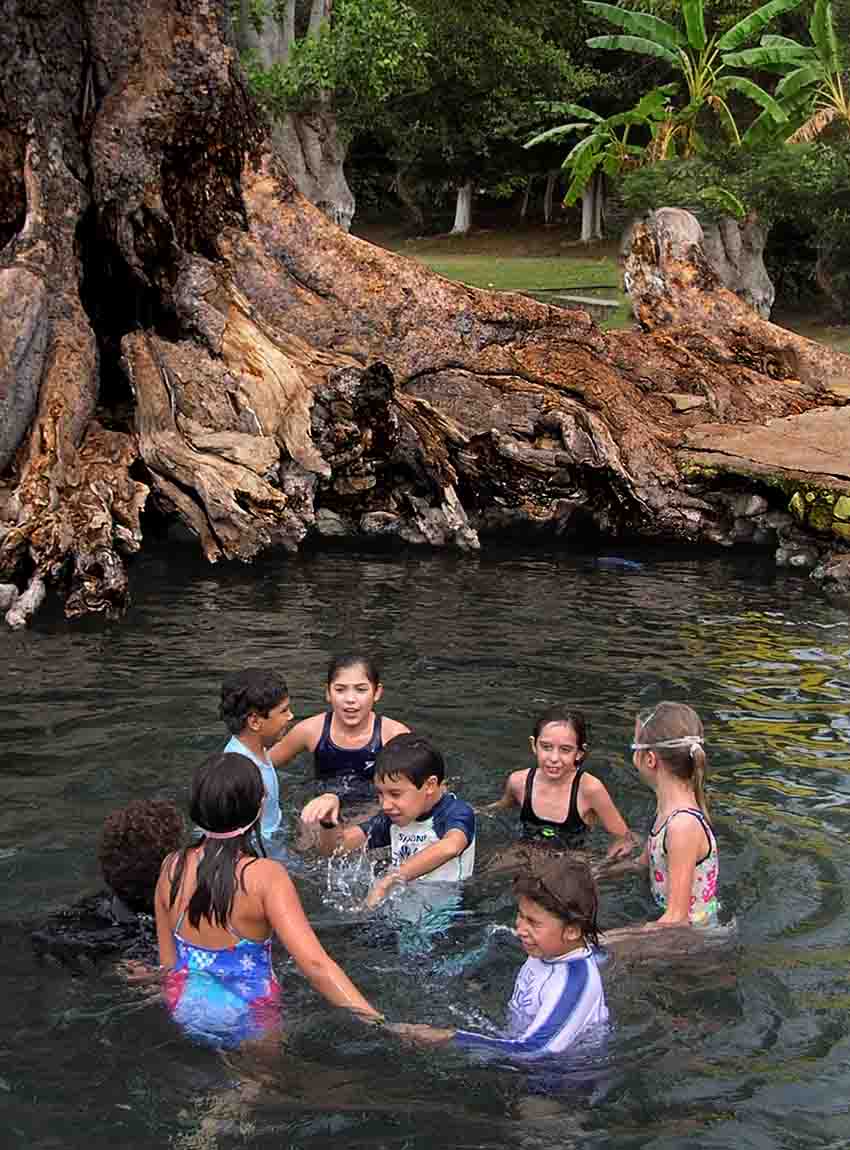
Probably the most famous species of splitfin is Ameca splendens, the butterfly splitfin, which became a favorite of fish fanciers around the world not only for its beauty but also for its dietary preference: it just happens to love algae, which means a butterfly splitfin in your aquarium will keep it spotlessly clean.
In these waters, researchers from the University of Michoacán recently reintroduced two species that had gone extinct locally: the tequila splitfin (Zoogoneticus tequila) and the golden skiffia (Skiffia francesae),
To reach the restaurant area, ask Google Maps to take you to Zona Restaurantera, Teuchitlán, Jalisco. You’ll find the birdwatching walkway just south of the restaurants.
If you’d like to visit the dam, bicycle trail and little park at the south end of the lake, ask for Muelle La Vega, Jalisco. Both sites are less than an hour’s drive from Guadalajara.
The writer has lived near Guadalajara, Jalisco, since 1985. His most recent book is Outdoors in Western Mexico, Volume Three. More of his writing can be found on his blog.
